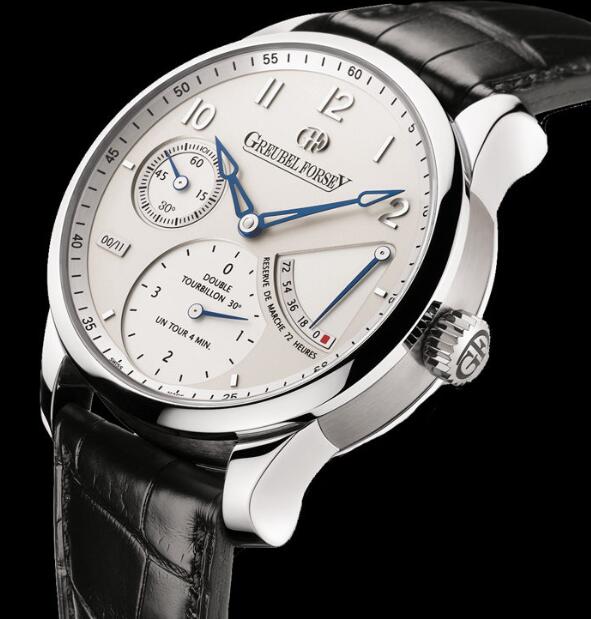Greubel Forsey Double BalancierÀ Différentiel Constant watch hands-on
The cliché: Sometimes you have to break some rules to achieve the goals you want. It is precisely because of the sacrifice of some basic principles (such as clarity and legibility between 4 o’clock and 10 o’clock) that Greubel Forsey Double Balancierà Différentiel Constant did this, but instead emphasized some incredibly complex and unbelievable Dazzling beautiful chaotic mechanical feat. This is the method and reason.
Founded in 2004, Greubel Forsey became famous by creating some of the most complex tourbillon watches in the world-think about the Quadruple Tourbillon (hands-on here), or the $2 million Art Piece 1 watch (hands-on). The successful cooperation between Robert Greubel and Stephen Forsey (and still growing) for about 12 years has proven to be long enough to allow some non-tourbillon products to enter The ranks of brands in order to keep prices down. To a more affordable level. Although this still means that we are going deep into the six-figure field, it actually positions GF to a certain extent, enabling them to actually compete with the high-complexity works of major brands such as Jaeger-LeCoultre and Audemars Piguet. other.
In the typical Greubel Forsey style, this does not mean that traditional complications such as perpetual calendars (although they do one of them, and are very incredible), chronographs or The Minute Repeater instead uses a twisted, enhanced and complicated timing mechanism. In the double Balancierà Différentiel constant in Gauperfuss, its fancy forward-looking and -sounding, as the name implies, are not one but two balance wheels, with the difference of attack and concentration added from the spherical surface.

Let us first look at the mystery of the two crazy spinning balance wheels. As they say, “If one is good, then two are better”, but this is clearly only the tip of the technical iceberg. The two balance wheels are arranged on two independent escapement platforms, each of which consists of 71 parts. These platforms have been tilted and installed at a 30° angle to the plane of the moving board.Popular replica watches
The reason is as follows: The performance (velocity and amplitude) of the balance wheel and hairspring is strongly influenced by their location. When the watchmaker adjusts the movement, he/she will have to find the correct balance between the balance wheel and the hairspring. The performance of the movement in different positions varies greatly. When the watch is lying flat on the table (so the wheels and springs are also horizontal), its speed will be very different from when the crown is placed down so that it is almost in a vertical position.
By mounting the balance wheel and its platform at an angle to the main board and to each other, each balance wheel will spend a very limited amount of time in horizontal and vertical positions (even if the watch is placed on a table or placed vertically in a table). Cabinet), the biggest difference and error. The 30° angle of inclination acts as a constant average coefficient, and because the angle settings of the two balance wheels are different, at least one of them will always behave closer to ideal.
The question now is how to convert the speed difference between the two balance wheels into a mechanical timing function? How to make two timing mechanisms drive only one set of hands? The answer is a differential system that is very similar to the system you find in a car. Frankly speaking, since I obviously don’t know its creator, please do the same as me, though, please try to let you understand how it works and why it exists in it in the first place. But first, please watch this sweet old-fashioned video that beautifully demonstrates how the differential works-it took 5 minutes specifically to surprise yourself. ladies replica watches
If you look at the close-up photo above, you will find that the differential is essentially composed of three wheels on top of each other. The top and bottom escapements are respectively connected to the two escapements, while the middle escapement is connected to the passing train, or basically to the rest of the movement. Now, since the balance wheel is beating at its own speed-ideally 3 Hz or 21,600 vibrations per hour, neither balance wheel runs precisely at that frequency due to the deviation caused by the position error-the differential, using the video explained Above principle, average the two.
So, as an example, if one escapement runs at -2 seconds per day and the other runs at +2, the average value of the differential transmitted to the hands is actually 0 – or perfect timing. So what does the 0-1-2-3 sub-dial have to do with all this? That is a four-minute counter, which is connected to the other part of the differential…
You will find that it seems that all the dazzling engineering design is not enough. Greubel Forsey replica adds a constant force mechanism to the differential. Through the small holes provided on the back cover of the movement, the wheels and springs on the underside of the differential can be found. This spring, to the untrained eye, it seems a bit like a hairspring. It is responsible for releasing its energy into the differential, all the way to the double escapement. This is done to counteract the reduced torque transmitted by the movement’s two series barrels when their 72-hour power reserve is about to run out. The four-minute counter we mentioned above is connected to the bottom gear of the constant force mechanism because it takes four full minutes to fully rotate.
